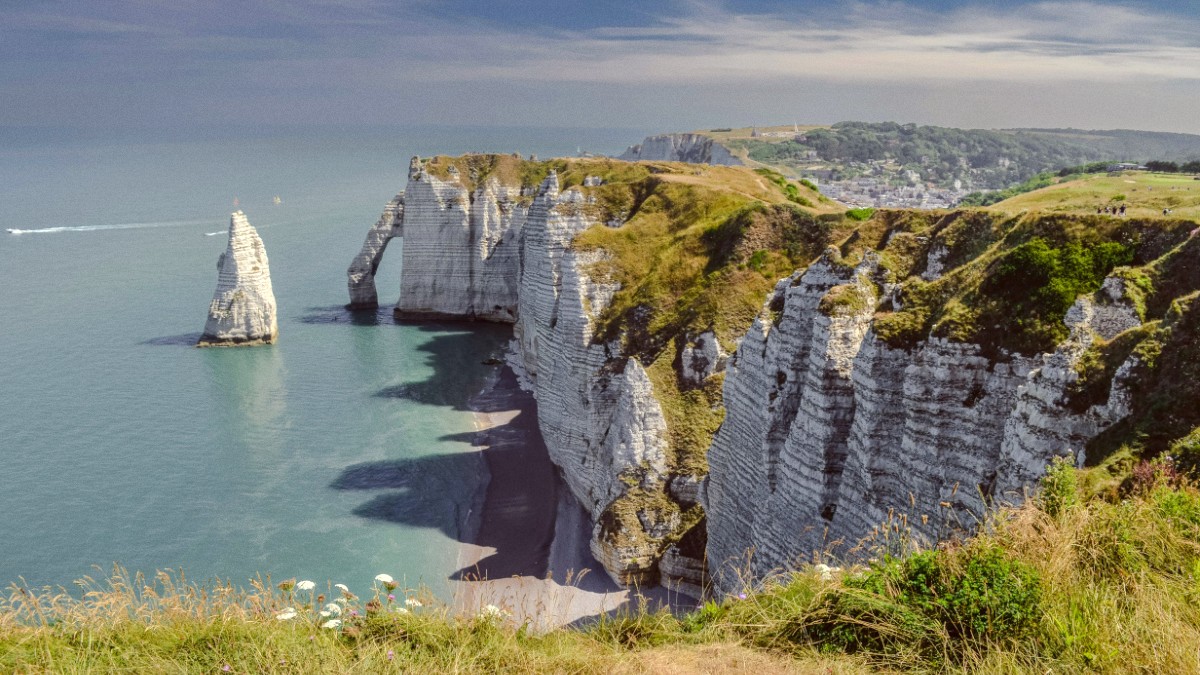
France
A historic fishing port located just north of Etretat on the Alabaster Coast. It features a beautiful marina, a long pebble beach, and a rich maritime past.
The Palais Bénédictine is Fécamp's most famous site. This opulent palace produces the renowned Bénédictine liqueur. It functions as a museum, distillery, and art gallery, with a fascinating history. The town also has a museum dedicated to its fishing heritage.
Consider how you prefer to explore beyond Etretat, weighing structured tours against the freedom of independent journeys.
Independent travel offers maximum flexibility. Set your own pace, choose your attractions, and dine where you prefer. This approach often proves cost-effective, especially with public transport or a rental car.
Organized tours handle all transportation and often include entry fees with a guide. This option works well if you prefer not to drive or navigate public transport, or desire historical context from an expert.
Beyond Etretat's immediate cliffs, the broader Alabaster Coast and Norman countryside offer further natural beauty.
The Etretat cliffs and the surrounding Alabaster Coast are naturally protected areas, valued for their geological and ecological attributes. Conservation efforts focus on managing erosion and preserving unique flora and fauna.
The Parc Naturel Régional des Boucles de la Seine Normande (further inland) offers forests, wetlands, and river landscapes suited for walking and cycling, providing a different natural environment.
Consider driving along the D79, the "ridge road" above the cliffs between Fécamp and Etretat, and further south. This route offers continuous panoramic views of the chalk cliffs and the English Channel.
Explore the small valleys (valleuses) that cut through the cliffs. These often lead to secluded beaches or small hamlets. The sandy beaches of Deauville and Trouville provide a contrast to Etretat's pebbles.
During winter, the coast experiences dramatic storms, offering powerful views of waves crashing against the cliffs. Spring sees the countryside around Etretat come alive with wildflowers and blooming orchards, adding color.
Normandy abounds in history and culture beyond its famous coastline.
The Palais Bénédictine in Fécamp is an unique historical and architectural site. Rouen, the historic capital of Normandy, boasts a stunning Gothic cathedral and half-timbered houses with Joan of Arc ties.
The D-Day Landing Beaches offer profound historical significance. This is a longer day trip. Mont Saint-Michel, the iconic medieval abbey, is an UNESCO World Heritage site. This is a long but rewarding day trip.
Drive through the Pays de Caux, the agricultural plateau behind Etretat. Explore small villages and visit local farms (e.g., cider or cheese producers) to experience the quieter, traditional side of Normandy.
While not a main pilgrimage destination, the Notre-Dame de la Garde Chapel on the Falaise d'Amont (Etretat) has historical significance as a place of prayer for local sailors. It offers a tranquil spot for reflection and panoramic views.
Drive through Pays de Caux, visiting small villages and local farms for traditional Norman life.
Visit Notre-Dame de la Garde Chapel for reflection and panoramic views.
Etretat can serve as part of a larger Normandy itinerary or a gateway to other French regions.
Add 1-2 days to explore Fécamp, Dieppe, and the charming resort towns of Honfleur, Deauville, and Trouville.
Add 2-3 days to visit Rouen and a trip to the D-Day Landing Beaches and associated museums (e.g., Bayeux, Caen).
Combine Etretat with a longer stay in Paris, given the convenient train connections between Le Havre and the capital.
The obvious next stop for many, offering urban culture, iconic landmarks, and world-class museums.
West of Normandy, Brittany offers a rugged coastline, Celtic culture, and unique culinary traditions.
To the south, famous for its magnificent châteaux and vineyards, a distinct French region.